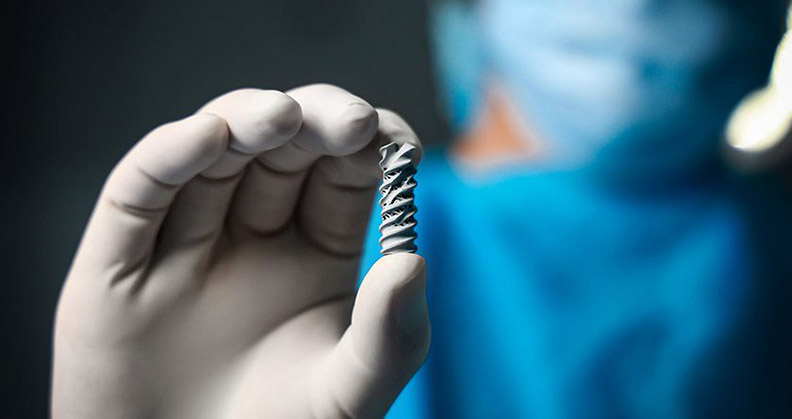
As 2015 came to a close, FDA released its annual priority list for the new year, as well as previously-issued final guidance documents on which the Center for Devices and Radiological Health (CDRH) is accepting feedback as part of its retrospective review.
Priorities relevant to orthopaedic device manufacturers in 2016 are listed below.
A-list
Final Guidance Topics
• Benefit/Risk Factors to Consider when Reviewing IDE Submissions
• UDI Direct Marking
• Adaptive Design for Medical Device Clinical Studies
• Incorporating Patient Preferences into Medical Devices Premarket Approvals, Humanitarian Device Exemptions and De Novo Classifications
• Applying Human Factors & Usability Engineering to Optimize Medical Device Design
• Submission and Review of Sterility Information for Devices Labeled as Sterile
• Use of ISO 10993-1, Biological Evaluation of Medical Devices Part I: Evaluation and Testing (Biocompatibility)
• Postmarket Surveillance Studies Under Section 522 of the Food, Drug and Cosmetic Act
• Medical Device Reporting (MDR) for Manufacturers
Draft Guidance Topics
• Medical Device Decision Support Software
• Use of Symbols in Labeling
• 510(k) Modifications
• 510(k) Third Party Review Program
• Use of Real-World Observational Patient Data to Support Decision Making for Medical Devices
• UDI Convenience Kit
• Public Notification of Emerging Postmarket Medical Device Signals
Select final guidance documents from 1976, 1986, 1996 and 2006 will be subject to retrospective review during 2016. The complete list, as well as the full list of the Agency’s 2016 priorities, can be found here.
How did FDA do with its 2015 priorities? To determine that, BONEZONE looked at the status of those selected as pertinent to orthopaedic device manufacturers and found that about half of those from the A-list have been updated. A few have moved from 2015’s draft guidance A-list to this year’s final guidance A-list.
A-list
Final Guidance Topics
Adaptive Design for Medical Device Clinical Studies
Status: Draft guidance was released in May 2015.
Adaptive designs are different from traditional or fixed studies because the factors of the study must be specified at the study’s onset and remain unchanged. This draft guidance outlines the principles and benefits of adaptive designs, as well as one of its defining features: flexibility during data collection. Companies are able to learn from the results of the study during its course. If goals are met by that analysis point, companies can stop enrolling patients and submit their data to FDA.
Though adaptive designs have the potential to reduce study time and costs, they won’t work for every trial. Read more about what to consider before employing this structure for your study.
Applying Human Factors & Usability Engineering to Optimize Medical Device Design
Status: This has not been updated since the original draft guidance in June 2011.
Regulatory bodies have been paying closer attention to human factors, as evidenced by stricter protocols across the globe. An optimal human factors program can help organizations minimize risks and elevate their position in the increasingly competitive orthopaedic industry.
What comprises a robust human factors program? BONEZONE recently spoke to several human factors experts to find out.
Submission and Review of Sterility Information in 510(k) Submissions for Devices Labeled as Sterile
Status: This has not been updated since the draft guidance was released in December 2008.
Jozef Mastej, Vice President of Operations at Gibraltar Laboratories, addressed the cleaning and sterilization validation process for reprocessing reusable devices at OMTEC 2015. His insights can be found here.
Balancing Premarket and Postmarket Data Collection for Devices Subject to Premarket Approval
Status: Issued in April 2015.
Intent to Exempt Certain Class II and Class I Reserved Medical Devices from Premarket Notification Requirements
Status: Issued in August 2015.
Use of ISO 10993-1, Biological Evaluation of Medical Devices Part I: Evaluation and Testing (Biocompatibility)
Status: This has not been updated from the original draft guidance, issued in April 2013.
Draft Guidance Topics
UDI Direct Marking
Status: The draft guidance, Unique Device Identification: Direct Marking of Devices, was released in June 2015.
Orthopaedic device manufacturers that have long questioned how to apply UDIs to products in procedure trays may have a few more answers after this draft guidance.
The guidance indicates that direct marking on the device itself is required if the device is intended to be used more than once and intended to be reprocessed before each use, in order to ensure identification of the devices through their distribution and use.
FDA did not specify a particular approach to direct marking, instead recommending possible methods of etching, attaching a permanent plaque to durable equipment or affixing a permanent tag such as a radiofrequency ID to the device.
UDI FAQs
Status: No documents have been released on this since Unique Device Identifier System: Frequently Asked Questions, Vol. 1 in August 2014.
Informed Consent: Policy for Observational Data Used to Fulfill Device Requirements
Status: No documents have been issued on this topic.
Medical Device Accessories
Status: The draft guidance, Medical Device Accessories: Defining Accessories and Classification Pathway for New Accessory Types, was released in January 2015.
Medical Device Decision Support Software
Status: No draft guidance has been released on this topic.
Benefit/Risk Factors to Consider When Reviewing IDE Submissions
Status: Factors to Consider When Making Benefit/Risk Determinations for Medical Device Investigational Device Exemptions (IDEs) was issued in June 2015.




